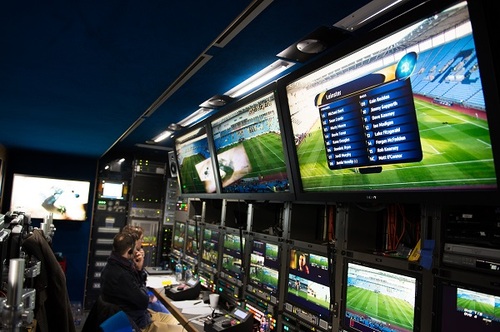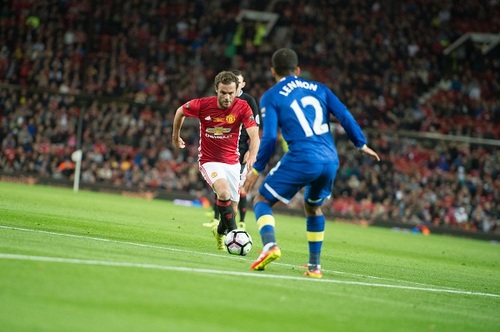|
|
|
Contributors | Messages | Polls | Resources |
|
BT Sport's COO Discusses UHD Jamie Hindaugh, COO, BT Sport, 10/13/2016
When BT splashed out £738 million (around $1.2 billion at the time) on the broadcast rights for 38 Premier League football (soccer) matches in 2013, it raised quite a few eyebrows. BT also acquired rights to a variety of other sports, including rugby and Moto GP, and it picked up ESPN's existing channels in the UK. In total, it was estimated BT spent more than £1 billion (around $1.6 billion at 2013 exchange rates) on BT Sport, including state-of-the-art facilities for TV broadcast. The service was offered free to all BT Group plc (NYSE: BT; London: BTA) broadband subscribers, greatly enhancing the value proposition for the broadband provider in football-crazy Britain. And that was always the goal for BT -- to add more value to its broadband service by coupling content with high-speed Internet access. Keen to offer a cutting edge service for both broadcast and broadband, BT picked Jamie Hindaugh to build the infrastructure and operating model for its service. Hindaugh had previously headed the BBC's multi-platform broadcast of the 2012 London Olympics. As the chief operating officer for BT Sport, Hindaugh has been aggressive in pushing next-generation TV services beyond online streaming, making BT Sport an early adopter of 4K Ultra HD technology. Hindaugh is also a member of Telco Transformation's VTAB (Video Transformation Advisory Board). We caught up with him in London recently to discuss his reasons for pushing ahead with UHD. Telco Transformation: Can you update us on what BT Sport is currently doing with UHD? Jamie Hindaugh: We launched a UHD channel about four months ago. It was the first live UHD channel in the EU and the first worldwide to offer UHD week-in, week-out. We did 89 events last year in UHD -- mostly football but also rugby, squash and motor racing. We went in when no one else was doing 4K, we used 4K cameras natively, converted to HD in our truck -- and this is something we have developed, this ability to use a single truck to deliver both HD and UHD video. We did it for the hockey Champions Cup at the Lee Valley facility last year.
The single truck capture has really helped us. It's enabled us to look at expanding without incremental cost since there is a single workflow, single truck for both services [HD and 4K UHD.] We re-launched the 4K channel using the single truck capture for 52 live events, including the launch of the premier league. We also offer conference football matches, rugby etc. In fact the word "pioneer" has been used for our single truck approach, and others are also doing it now. We are working on trying to ratify it as a standard. TT: You had some recent announcements at IBC on new 4K initiatives. Can you talk us through them? JH: At IBC we announced with Ericsson that we were doing the first contribution feeds with 4K in HEVC (i.e. using High Efficiency Video Coding compression). Currently these are delivered in four quadrants but we can combine them in HEVC into a single feed. We did the first live demo of this ever. We also demoed BT Sport with Dolby Atmos at the SVG Awards, doing a live broadcast of the Liverpool game. We'll be rolling out Atmos for the English Premier League and the FA cup matches moving forward. TT: So what made you decide that this was the right time to move forward with UHD? JH: Well, I would say our timing was probably wrong! We were the first to do it, and there wasn't much that was ready. But BT Sport was a young organization, and started with partnerships. We knew we had a collective of partners and we were part of BT, always at the forefront of innovation. We knew we could deliver the content over our own network, the BT Infinity network. It's superfast broadband and can deliver 4K. So it was a perfect storm, in a sense, for BT. TT: There are some questions about the value of UHD for consumers, particularly with TV sets below 55-60 inches. JH: Well, I have a 49-inch TV at home and I can see the difference. Yes, the optimum size is 55 inches. But UHD is also part of the SmartTV revolution, which are now more likely to be 4K TVs. It's aimed at consumers who are looking to move to the next generation of TV but also looking at 4K resolution. The other difference from BT Sport's point of view is that our single truck approach provides our HD feeds at higher quality, because they come from 4K capture.
TT: What are your thoughts about HDR, as a complement to UHD? JH: We have run some successful trials with HDR, for our coverage of the Americas Cup and football. Again, the beauty of the single truck approach is that we can do HDR with 4K UHD, and HDR with HD. We are following the different approaches, and looking at both PQ (Perceptual Quantizer) and HLG (Hybrid-Log Gamma). [Note: PQ and HLG are both technical approaches to deploying HDR.] We have worked with the BBC on HLG, but it's not backwards compatible. But PQ also has its issues -- we worked on it with Sony. We will roll out HDR, but the timing has to be right, when TV penetration is high enough. We'll be adding part II of this interview with Jamie Hindaugh to the site in a few days, where he discusses BT Sport's initiatives with augmented and virtual reality, and his challenges with rolling out new TV initiatives. — Aditya Kishore, Practice Leader, Video Transformation, Telco Transformation |
In part two of this Q&A, the carrier's group head of network virtualization, SDN and NFV calls on vendors to move faster and lead the cloudification charge.
It's time to focus on cloudification instead, Fran Heeran, the group head of Network Virtualization, SDN and NFV at Vodafone, says.
5G must coexist with LTE, 3G and a host of technologies that will ride on top of it, says Arnaud Vamparys, Orange Network Labs' senior vice president for radio networks.
The OpenStack Foundation's Ildiko Vancsa suggests that 5G readiness means never abandoning telco applications and infrastructures once they're 'cloudy enough.'
IDC's John Delaney talks about how telecom CIOs are addressing the relationship between 5G, automation and virtualization, while cautioning that they might be forgetting the basics.
 On-the-Air Thursdays Digital Audio On-the-Air Thursdays Digital AudioARCHIVED | December 7, 2017, 12pm EST
Orange has been one of the leading proponents of SDN and NFV. In this Telco Transformation radio show, Orange's John Isch provides some perspective on his company's NFV/SDN journey.
 Special Huawei Video Special Huawei VideoHuawei Network Transformation Seminar The adoption of virtualization technology and cloud architectures by telecom network operators is now well underway but there is still a long way to go before the transition to an era of Network Functions Cloudification (NFC) is complete. |
|
|
|
||




















